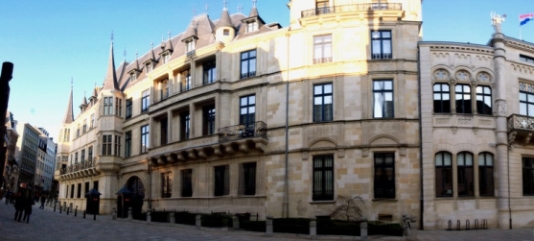About us
About 41-6:
We are about to launch an new 41 in Luxembourg.
It will be the 6th 41 operating in Luxembourg, and will be called 41-6.
More information will be available at our charter the 25-27/11/2016.
About Luxembourg:
History

The city of Luxembourg is built on rocks at the confluence of the Alzette and Pétrusse rivers. Although these rivers are small, they flow at the bottom of deep valleys, providing the city with natural defences on three sides.
This strong natural position was a key factor in the development of one of the most powerful fortresses in Europe after the initial castle was built in 963 by count Sigefried.
Luxembourg was captured in a surprise night-attack by the Burgundians in 1443, passing to the Habsburgs in 1477 along with the rest of the Netherlands. The province did not revolt against Spanish rule along with the other Netherlands during the 80 Years War. A long series of wars (1568–1648) between the Dutch and the Spanish in which Spain gradually lost control of the northern Netherlands, which became independant.
When the Spanish failed to comply, Louis sent an army to Luxembourg in 1684. There followed a hard-fought siege lasting over a month. The attacks were directed by VaubanSébastien Le Prestre de Vauban (1633-1707), is considered one of the greatest military engineers of all time. In his life he was responsible for the fortification of over 160 places in France, however his major contribution to warfare was his methods of attack, which revolutionised siege warfare. See the 'engineers' page for more information on Vauban.
In 1713 the Spanish Netherlands passed to the Austrians, who carried out more work to enlarge and strengthen the fortress of Luxembourg.
In 1867 France sought to strengthen its eastern frontier by purchasing the Duchy of Luxembourg from the Netherlands, thereby gaining control of the fortress. The Prussians opposed this and refused to withdraw their own troops from Luxembourg.
Neither side was willing to back down and war was only averted by the signing of the Treaty of London, which made Luxembourg neutral and stipulated the demolition of the fortifications.
Today

The world’s only Grand Duchy, Luxembourg is a constitutional monarchy neighboring Belgium, France, and Germany. Covering less than 2.500 square km, Luxembourg is home to nearly 520.000 residents, with about a fifth of these individuals residing in or near Luxembourg City. Roman Catholic is the primary religion, and foreign residents represent more than a third of Luxembourg’s population.
You can be assured of an open and friendly welcome from people who are accustomed to mixing freely with their European neighbours and speak more than one language. Besides their native tongue Lëtzebuergesch, German, French and English are common
Luxembourgers are proud to call their country the green heart of Europe. Over a third of the country is covered in forest, the remainder contains a great deal that is of historical and cultural interest.
The oldest part of the City centre was built in the renaissance style and nearby is the Cathedral and the Palace, the official residence of the Grand Duke, one wing of which also contains the Parliament (Chambre des Députés).
Luxembourg is a founding member of the European Union, and home to several EU institutions, like the European Court of Justice, European Investment Bank, European Court of Auditors, Eurostat offices, and several Directorates of the European Commission.
Here’s a little Lëtzebuergesch to get you started:
- Moien - Hello
- Addi or ava – Goodbye
- Merci – Thank you
- Entschellegt – Excuse me
- Wannechglift – Please
- Kéisecker - hedgehog
Luxembourg boasts a large array of historical and cultural sights that are worth seeing, lots of interesting and picturesque spots you can discover, countless legends and anecdotes worth relating.
More information can be found on the following websites:
- Luxembourg national tourist office: www.ont.lu
- Luxembourg-city tourist office: www.lcto.lu
- www.luxembourgforbusiness.lu
- www.en.wikipedia.org/wiki/History_of_Luxembourg
- Discover the fortress. www.ffgl.lu
- http://www.fortified-places.com/luxembourg/